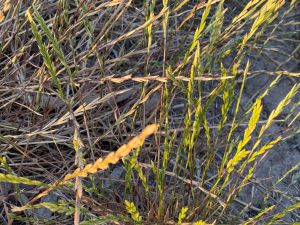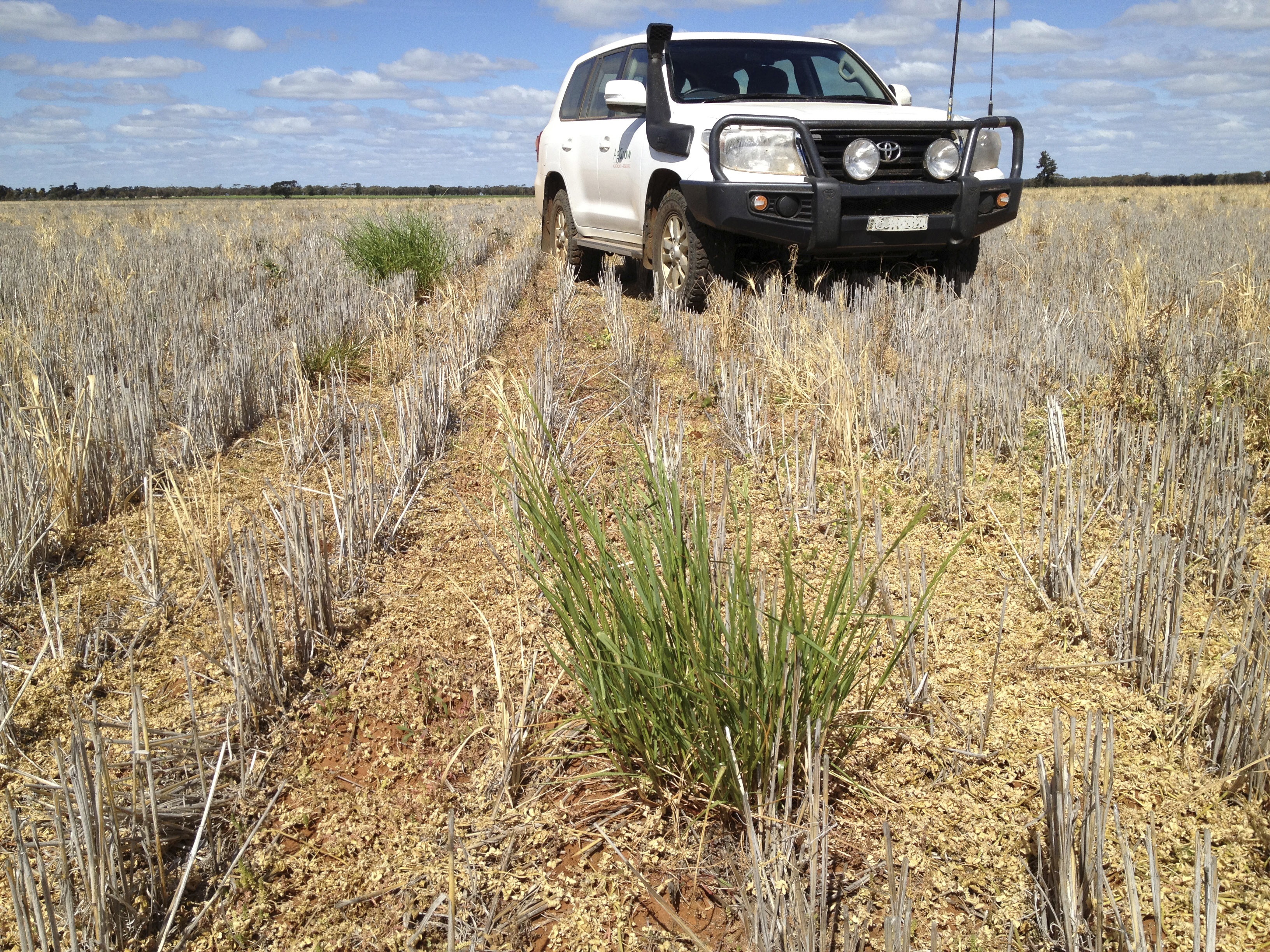Eliminate the green bridge to reduce in-season costs
Eliminate the green bridge to reduce in-season costs
Date: 05 Mar 2021

While volunteer plants and weeds take a well-known tax on soil moisture and nutrient levels over summer and early autumn, their ability to shelter harmful pathogens and pests can also be costly.
Many of the problems affecting emerging crops depend on a green bridge to survive from the previous growing season.
Eliminating this lifeline in late summer or early autumn can help reduce the inputs required to manage diseases and pests, especially during the early growth stages when any constraint can have a significant impact on final yield.
The green bridge carries a wide range of threats
A wide range of pests and diseases benefit from the presence of a green bridge. Some of the most important constraints for grain growers are listed below.
Cereal rusts
Stripe, stem and leaf rusts are fungal diseases spread by spores that move from infected hosts and can affect 100 per cent of the crop. Even cereal varieties with adult plant resistance to rusts can be highly vulnerable to infection as seedlings.
Viruses
Wheat streak mosaic virus, barley yellow dwarf virus, cereal yellow dwarf virus, turnip yellows virus (formerly beet western yellows virus) and bean leaf roll virus are all viral diseases that have insect pests as a vector. These pests over-summer and breed on a wide range of green bridge hosts, before migrating onto crop seedlings.
In certain cases, such as turnip yellows virus, infected weed hosts can serve as virus reservoirs, infecting aphid vectors which then transmit the virus into commercial crops.
Pests
Numerous insect pests survive on weed and volunteer hosts.
- Several species of aphid migrate from host plants into young crops, where they suck important nutrients from the plants and frequently act as a vector for viral diseases. Removing the green bridge eliminates both threats.
- Russian wheat aphid is a relatively new invasive pest that survives over summer on weed hosts then spreads rapidly into young cereal crops in an autumn migration. The population can be expected to double daily between initial infestation and growth stage 50.
- Diamondback moth or cabbage moth multiplies over summer on canola volunteers and brassica weeds. The caterpillars can devastate young canola plants and crops at the mid to late flowering stage.
- Slugs will use summer weeds as a source of vital food, moisture and shelter.
- Various other pests, including webworm, cutworm, armyworm, flea beetle, lucerne flea and even mice can use green bridge plants as a source of food, moisture and shelter.
Soil-borne diseases
In previously cropped areas, soil-borne diseases and pests that are not highly mobile can persist more successfully and even increase with the support of a green bridge. These include crown rot, root lesion nematodes and rhizoctonia. Along with planting non-host rotations, green bridge elimination is an important tool for reducing pest and disease pressure.

Act at least four weeks before seeding
Removing green bridge hosts can help prevent an established pest population from being present in or near a new crop. As a result, infection or infestation will be less likely and, if it does occur, less severe.
Crucially, the green bridge must not be allowed to overlap with crop emergence. Attempting to control the green bridge after emergence may only encourage pests to move into the young crop.
The GRDC’s green bridge factsheet recommends eliminating all green bridge plants no less than four weeks before seeding.
Green bridge control options
Green bridge plants can be managed in a range of ways.
Herbicides
Spraying weeds and volunteers provides the most effective green bridge control. Follow the label rates required to achieve complete elimination of the unwanted plants at least four weeks before sowing begins. Spraying earlier will also help reduce the soil moisture and nutrients lost to weeds, which can impact final crop yields.
To achieve complete green bridge elimination, it is important to monitor sprayed areas and to apply a double-knock treatment to any resistant survivors.
Grazing
Heavy grazing can reduce the summer vegetation load. Grazing patterns can be irregular and seldom kills host plants completely, so they can continue to harbour viruses and root diseases.
Tillage
Where tillage is compatible with the cropping system, it can be used to remove volunteer plants and other potential pest and disease hosts. Tillage needs to be completed four weeks before planting to effectively break the green bridge.
Work with neighbours
While minimising any carryover pest or disease is always beneficial, many populations can quickly re-establish themselves from relatively few host plants. Working with neighbours in a coordinated, area-wide approach to green bridge elimination is the most effective strategy.
Take care to eliminate weeds along fencelines, beside buildings and on roadsides as well as weeds in your paddocks.
Researchers have identified that just the soil moisture and nutrients taken up by summer weeds can cause yield losses of 0.5 to 1.0 tonne per hectare in cereals.
However, the harbouring in weeds of pests and diseases may be far more costly.
Green bridge elimination can be achieved at relatively low cost and can deliver very worthwhile returns.
Useful resources:
GRDC Summer fallow weed management manual
GRDC 2021 Grains Research Update crop pathology papers
How well will Russian wheat aphid cross the green bridge this season? – Cesar Australia
